25 positions et gestes du langage corporel du chien
Je comprends le sens de la communication canine
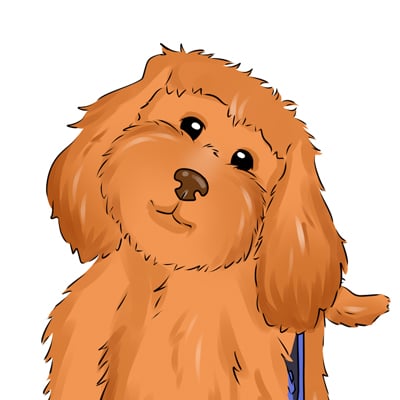
LE LANGAGE CORPOREL DES CHIENS
Temps de lecture: 15 minutes
Le chien est un animal grégaire dans son comportement social, il a besoin d'entrer en contact avec d'autres individus, c'est pourquoi il a développé différents gestes et différentes positions afin de pouvoir exprimer ce qu'il ressent et quelles sont ses intentions pour pouvoir vivre en communauté.
Dans cet article, nous examinerons le sens des positions les plus expressives du langage corporel des chiens et la manière dont la queue et les oreilles ont à voir dans leur façon de communiquer.
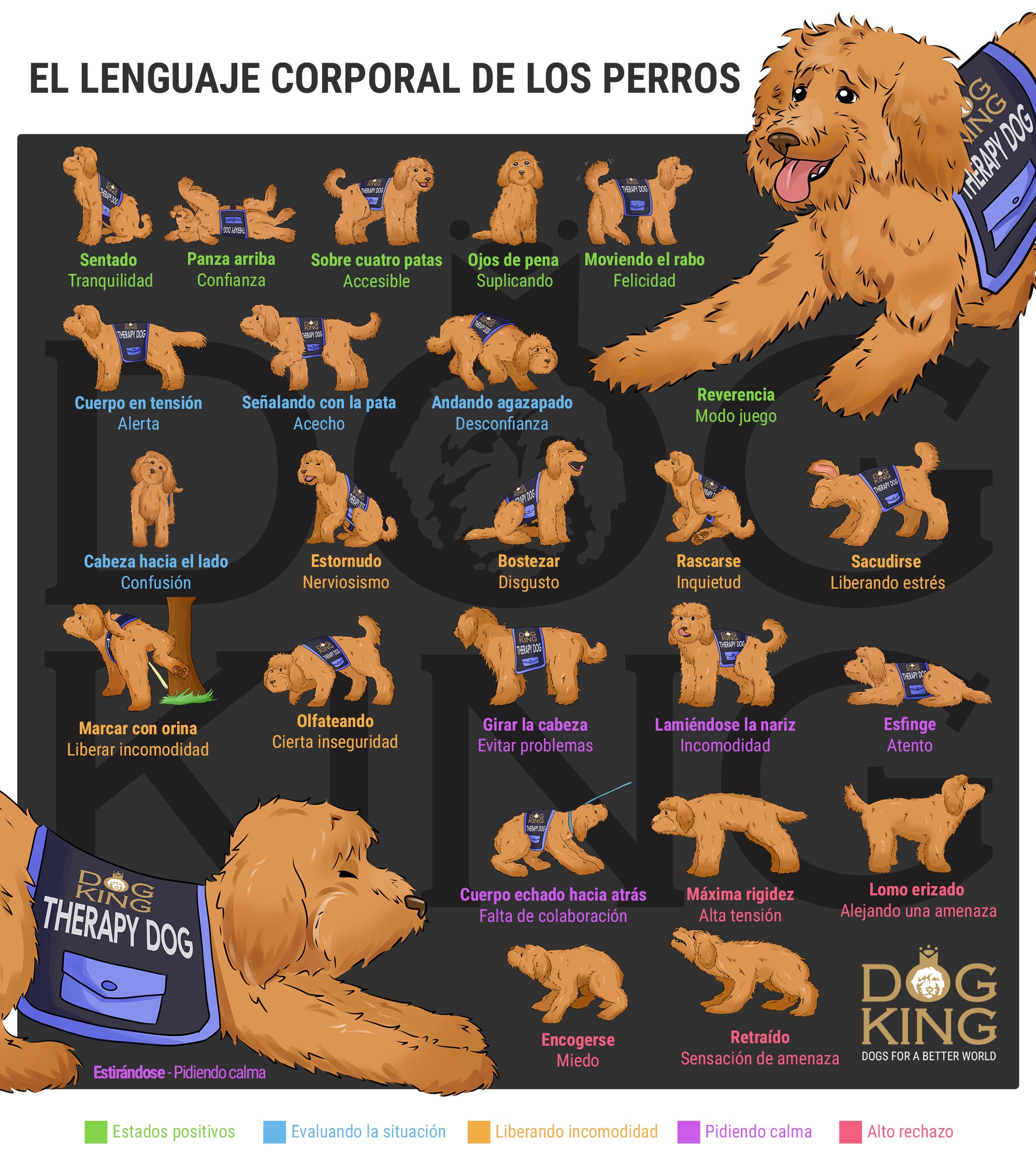
Table des matières
1- Comment les chiens communiquent-ils ?
2- Le sens des 25 positions les plus caractéristiques du chien
3- La communication des chiens à travers la queue
4- Le langage des chiens à travers les oreilles
5- L'amputation de la queue et des oreilles
Comment les chiens communiquent-ils?
Le langage gestuel du chien ressemble beaucoup à celui du loup. Cependant, les caractéristiques faciales, les dimensions et les formes du corps ainsi que la longueur du poil se sont modifiées autant chez le chien qu'actuellement, il est beaucoup plus difficile de reconnaître les gestes.
Les chiens ont les mêmes aptitudes et les mêmes règles sociales que les loups pour communiquer et éviter les conflits, bien que le comportement des loups soit beaucoup plus intense compte tenu des caractéristiques de leur habitat et de leurs conditions de vie. Normalement, les chiens ne sont pas exposés au même danger que les loups, raison pour laquelle ils n'ont pas besoin de magnifier leurs gestes et leurs expressions sont plus subtiles et délicates.
Le sens des 25 positions les plus caractéristiques du chien
Nous avons créé 25 illustrations inspirées de nos chiens de thérapie Cobberdog australiens pour représenter les positions les plus caractéristiques de ces chiens, bien que certaines, celles qui montrent de l'agressivité, soient particulièrement difficiles à voir chez un Cobberdog australien, car ce sont des chiens très pacifiques. Ce qui est intéressant, c'est qu'à travers ces images, nous pourrons montrer le langage corporel des chiens d'une race à poils longs et à oreilles tombantes, ce qui rend leurs gestes beaucoup plus subtils que dans les races plus proches des loups.
Position du chien 1: La révérence - Mode jeu
L'invitation principale d'un chien qui veut jouer, est de faire une révérence en pliant les pattes avant et en s'accroupissant sur la moitié de son corps, tandis que les pattes arrière restent droites. La queue du chien sera levée et il bougera d'un côté à l'autre tandis que sa gueule restera ouverte et sa langue dehors. Cette position peut être accompagnée d'aboiements excités ou d'attaques ludiques et de retraits. Cet ensemble de positions corporelles canines peut être utilisé comme une sorte de signal qui indique que tout comportement antérieur tendu ne doit pas être considéré comme une menace ou un défi.
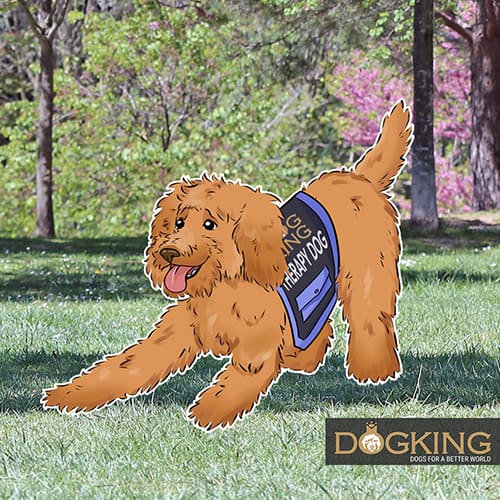
Position du chien 2: Sur le dos - Confiance
Le chien est si insouciant qu'il n'hésite pas à montrer son ventre à la personne qui le caresse. Il peut également se montrer ainsi quand il joue. Beaucoup de chiens sûrs d'eux-mêmes, et surtout les chiots, se positionnent ainsi pour jouer sur le sol. C'est une position qui reflète une profonde confiance étant donné que le chien s'expose totalement.
À ne pas confondre avec une position similaire qui témoigne d' une terreur intense: dans ce cas-là, le chien montre aussi son ventre mais avec la queue entre les pattes, la tête sur le côté et les yeux fermés tandis qu'il reste immobile. C'est sa manière de se rendre face à ce qu'il considère comme une menace de mort.
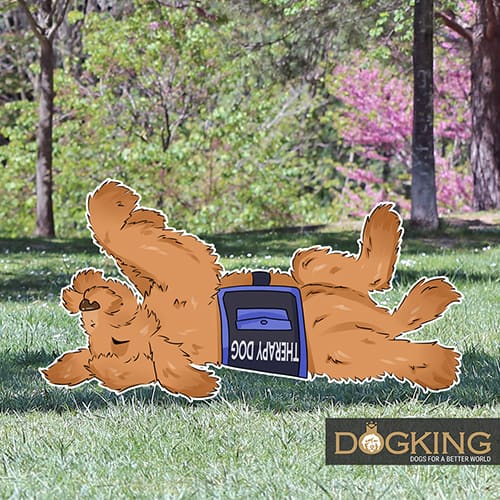
Position canine 3: Assis - Tranquilité
Le chien est détendu et observe. Ses oreilles sont détendues, ainsi que sa queue, son regard est tranquile et il n'a pas l'intention d'agir. C'est une position qu'adoptent normalement les chiens lorsqu'ils ne participent pas à l'action qui se déroule autour d'eux et qu'ils se comportent simplement en tant que spectateurs d'une situation qui n'est pas inhabituelle pour eux. Ils peuvent également adopter cette position quand ils attendent que leur maître finisse de faire quelque chose.
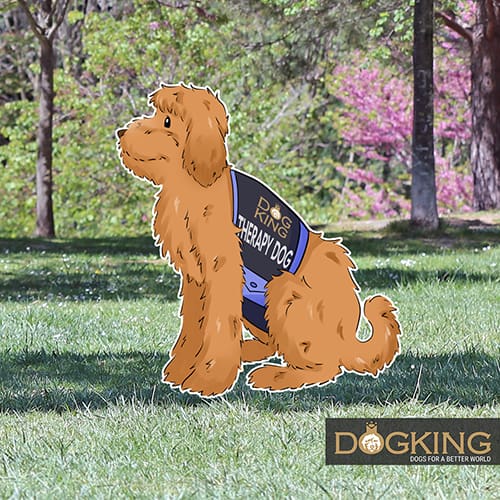
Position canine 4: Sur ses pattes - Accessible
Le chien est tranquille et confiant, et quand il est sur ses pattes, c'est probablement dans l'attente que l'on interagisse avec lui, et si cela n'a pas lieu, ce sera lui qui prendra l'initiative. En general, lorsqu'un chien est détendu et tranquille, n'importe qui peut s'en rendre compte de par sa position détendue et l'expression neutre de son visage. Ses oreilles auront la position normale de chaque race, sa queue sera plutôt basse, sa gueule légèrement ouverte et la langue dehors si le chien a tendance à haleter, et son corps ne sera normalement ni accroupi ni étiré. Il est possible qu'il ait les yeux à moitié fermés ainsi que les muscles du cou et du museau détendus. Le chien est détendu, il ne se sent pas menacé par le milieu qui l'entoure et il est possible d'entrer en interaction avec lui.
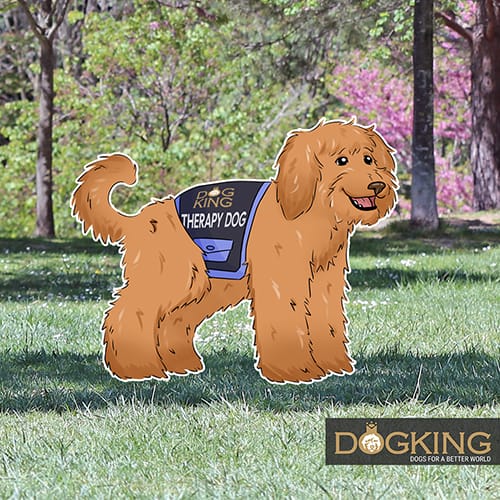
Position canine 5: Il remue sa queue - Bonheur
Le chien remue sa queue avec énergie tandis qu'il s'avance et ses yeux sont ouverts mais détendus, avec la tête haute, les oreilles dressées et la gueule ouverte et détendue aussi. Il montre de l'enthousiasme face à une situation qui lui plaît. Il ne faut pas considérer le mouvement de la queue comme synonyme de joie étant donné que les intentions du chien dépendent aussi du reste de ses gestes. Le chien peut aussi remuer sa queue par excitation lorsqu'il est en mode protection ou encore face à une attaque. Dans ces cas-là, il remuera sa queue et son corps sera tendu.
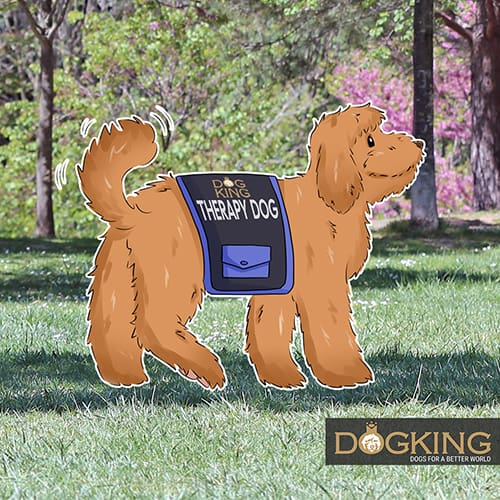
Posture du chien 6: corps tendu - En alerte
Le chien a détecté quelque chose d'inhabituel, même si cela ne semble pas être une menace pour lui. Il est sur ses pattes avec la queue dressée et la gueule fermée. Il évalue la situation et décide quoi faire. Ensuite, sa réaction peut être positive (s'il détecte que la situation inhabituelle est inoffensive et, dans ce cas-là, il s'approche ou se détend à nouveau) ou bien négative (s'il détecte que c'est une menace ou quelque chose qu'il ne parvient pas à identifier et, dans cet autre cas, il est sur la défensive en aboyant ou en faisant le guet.
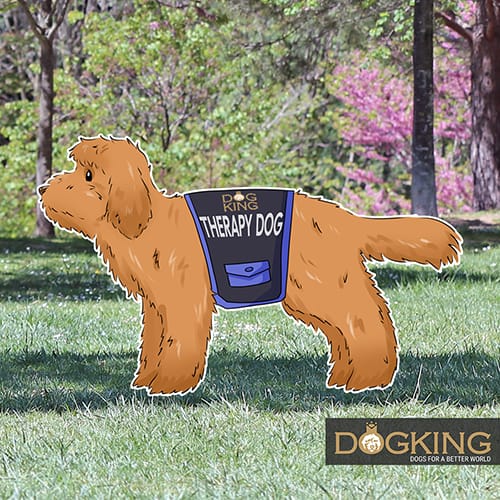
Geste canin 7: Il montre quelque chose avec la patte - Faire le guet
Le chien prend une position d'attention maximale face à une situation inhabituelle. Sa queue est tendue et ses pattes prêtes pour commencer une course (chasse) ou une fuite; l'une de ses pattes est levée et montre ce qui lui attire l'attention, sa gueule est fermée et ses oreilles sont dressées vers l'avant. Cette position révèle une situation d'évaluation où le chien se sent particulièrement étonné et exige une certaine concentration.
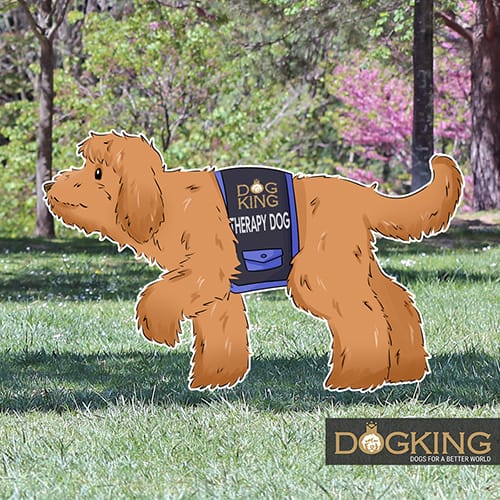
Position du chien 8: Ephynx - Attentif
Le chien se couche par terre mais il est tendu. Il est attentif, ses oreilles sont dressées et il est prêt à se lever s'il le considère nécessaire. Généralement, les chiens présentent cette position lorsqu'un autre chien s'approche d'eux et qu'ils veulent montrer leur intention non conflictive, laissant paraître une hiérarchie inférieure en se baissant vers le sol. Ils peuvent accompagner cette position d'autres mouvements: tourner la tête en arrière ou se lécher le museau.
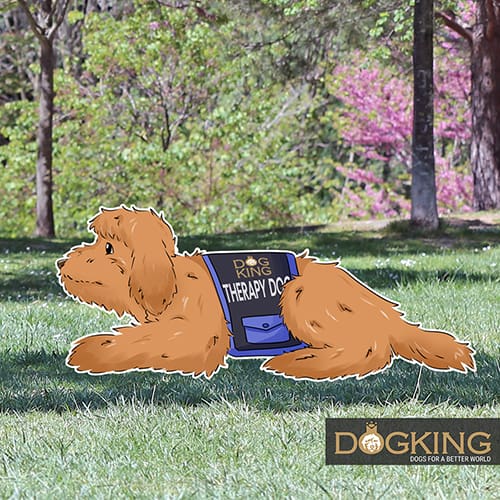
Geste canin 9: Il remue la tête sur le côte - Confusion
Le chien peut être debout ou assis et ce qui est le plus caractéristique de cet état de confusion c'est que sa tête sera inclinée sur le côté et ses oreilles, dressées. Le chien est alors témoin de quelque chose qu'il est en train d'essayer de comprendre, quelque chose d'inhabituel à quoi il ne trouve pas de sens. Cela peut être une attitude étrange de son maître, un son oscillant et saisissant ou bien encore, quelque chose qui bouge de manière erratique. Le chien ne se sent pas en danger mais ne sait pas non plus comment agir.
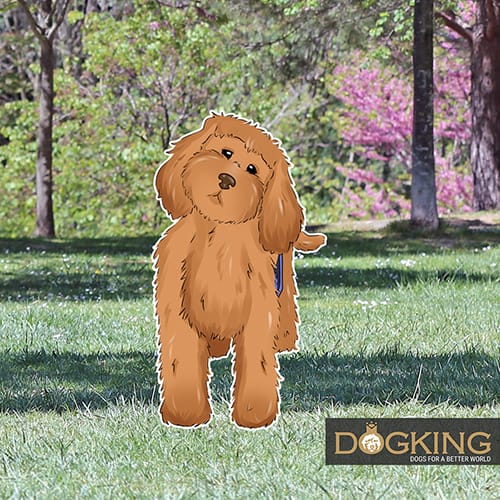
Geste canin 10: Yeux tristes - Supplication
Cette position est typique lorsque le chien vous demande à manger, bien qu'il puisse aussi l'utiliser pour exprimer le désir que vous lui lanciez la balle, vous le sortiez promener ou n'importe quel autre désir. Le chien s'assoit et vous regarde avec ses oreilles dressées et ses yeux très ouverts, montrant le blanc de ses yeux. En général, c'est un geste que les chiens n'utilisent qu'avec les humains pour leur supplier quelque chose.
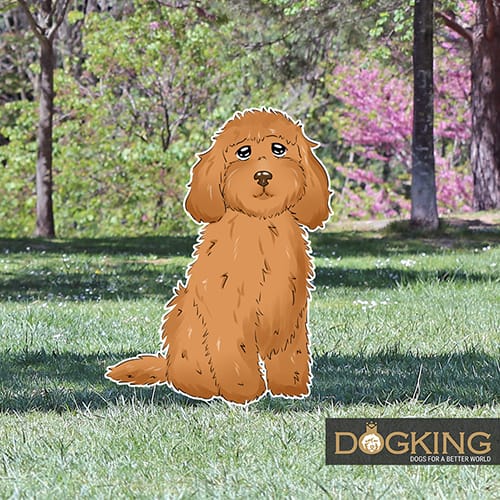
Posture du chien 11: accroupi - Méfiance
Le chien se déplace avec le corps et la tête baissés, les oreilles en avant, en portant toute son attention sur ce qui bouge. Quelque chose a attiré son attention et il veut savoir de quoi il s'agit. La chose ne semble pas suffisamment menaçante pour qu'il reste à l'écart, mais il n'est pas sûr non plus de ce qu'il va trouver. Si la chose qu'il approche bouge ou fait quelque chose d'inattendu, il est très probable qu'il s'enfuie ou, au contraire, qu'il la saisisse, selon le tempérament et la situation de chaque animal.
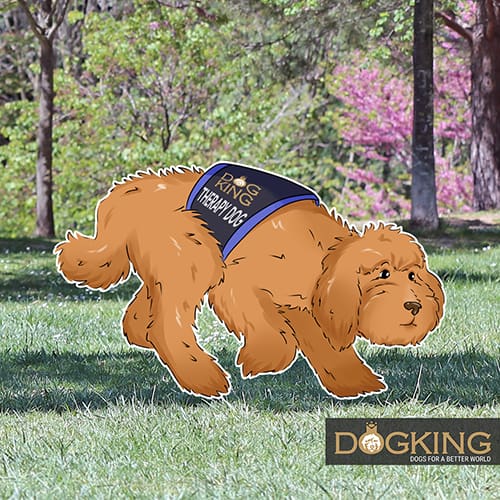
Geste du chien 12: Éternuer - Nervosité
Cela ne vous semble peut-être pas être un geste ou une posture, mais c'est souvent une façon de communiquer la nervosité d'un chien. Il est très courant lorsque le chien va chez le vétérinaire ou chez le toiletteur. C'est également le cas lorsque le temps de préparation pour sortir est trop long. Le chien devient nerveux et éternue. Bien entendu, les éternuements peuvent également être le symptôme d'un rhume. Si vous pensez que votre chien se trouve dans une situation qui pourrait le rendre nerveux et qu'il n'a pas éternué auparavant, cela signifie qu'il n'est pas enrhumé.
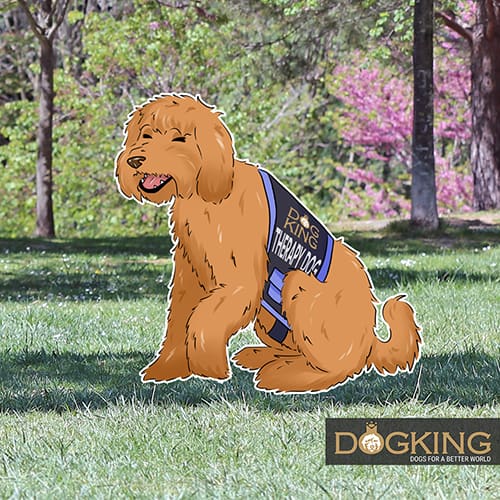
Posture du chien 13: S'étirer - Demander le calme
Lorsqu'un chien s'étire en étendant ses pattes avant et en rejetant son poids sur ses pattes arrière qui sont maintenues en l'air, il peut simplement vouloir bouger ses muscles après une sieste, mais si cela se produit dans une situation où le chien est mal à l'aise, il essaie d'exprimer à un autre chien ou à un humain qu'il ne veut pas d'ennuis et c'est sa façon de dire « détendez-vous ». Ce geste peut être associé à un bâillement pour montrer de façon plus évidente qu'il ne veut pas d'ennuis.
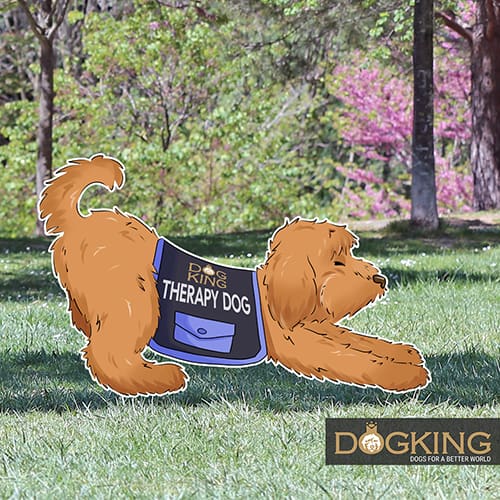
Geste du chien 14: Léchage de la truffe - Inconfort
Les chiens se lèchent fréquemment la truffe tout au long de la journée, car le fait de la garder humide est bénéfique pour leur odorat. Si ce geste se produit dans une situation qui met le chien mal à l'aise, c'est peut-être justement ce qu'il exprime. C'est aussi une façon de communiquer à un autre chien ou à une personne qu'il ne veut pas d'ennuis et que la situation doit être détendue. Ce geste apparaît généralement lorsqu'un chien en détecte un autre, le fixe et lui communique son intention de ne pas entrer en conflit avec sa langue. Vous pouvez également le voir lorsqu'il y a beaucoup de bruit autour de lui et qu'il veut partir, lorsque beaucoup de personnes le touchent ou dans toute autre situation susceptible de le mettre mal à l'aise.
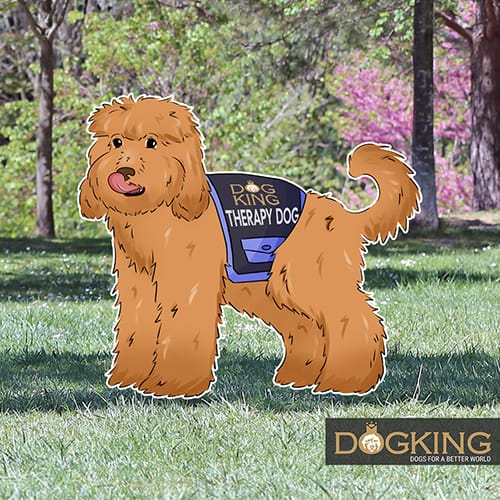
Geste du chien 15: Secouer - Évacuer le stress
Les chiens se secouent souvent, après être sortis de l'eau ou après une sieste, mais si vous voyez votre chien faire ce geste alors qu'il est nerveux, ce qu'il fait, c'est rediriger le stress généré par la situation et l'évacuer par ce geste. Parfois, si la situation le rend très nerveux, il peut se secouer de manière compulsive car il ne parvient pas à se calmer en se secouant et essaie de recommencer avec insistance.
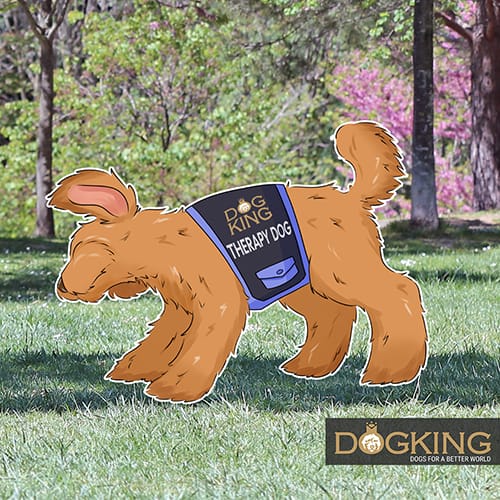
Geste du chien 16: Le bâillement - Le mécontentement
Un chien peut bâiller en dormant, mais c'est un geste qu'il utilise souvent lorsque quelque chose le met mal à l'aise, lui déplaît ou lui donne un sentiment d'insécurité. Les chiens bâillent pour indiquer qu'ils n'aiment pas la façon dont les choses se déroulent et pour exprimer à l'autre chien ou à la personne qu'ils ont besoin de se calmer. Comme le fait de secouer la tête, le bâillement est aussi un geste de soulagement du stress.
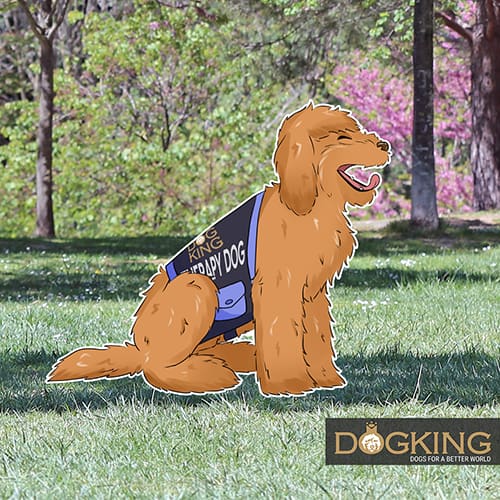
Posture du chien 17: Corps penché en arrière - Manque de collaboration
Lorsqu'un chien rejette tout son poids en arrière en se repliant, il montre un niveau élevé d'insécurité face à ce qui se passe et il se serait probablement déjà enfui de l'endroit s'il en avait eu la possibilité. Il s'agit d'une attitude typique des chiots lorsqu'ils rencontrent quelque chose de nouveau. Si votre chien est en laisse et adopte cette posture, il est clair que ce que vous voulez qu'il fasse est quelque chose qu'il ne veut en aucun cas. Par exemple, vous pouvez le voir faire cela si vous insistez pour qu'il rencontre un autre chien dont il a peur, si vous essayez de lui donner un bain ou s'il a peur des pétards et que vous voulez l'emmener à l'extérieur.
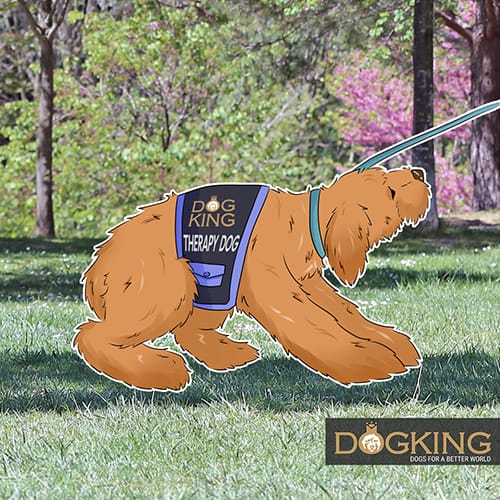
Geste du chien 18: Grattage - Agitation
Bien sûr, les chiens peuvent être calmes et en même temps avoir envie de se gratter. Mais si le chien se trouve dans une situation stressante, il est probable qu'il se gratte, parfois de manière compulsive. Ce comportement est similaire à celui des humains qui, dans une situation inconfortable, se grattent l'arrière de la tête ou le nez. Cela reflète le malaise que suscite la situation. Par exemple, si votre chien est nerveux à l'idée d'attendre que vous prépariez sa nourriture, vous remarquerez peut-être qu'il commence à se gratter. Il s'agit probablement d'un moyen de canaliser la nervosité liée à l'attente d'une chose qu'il désire tant.
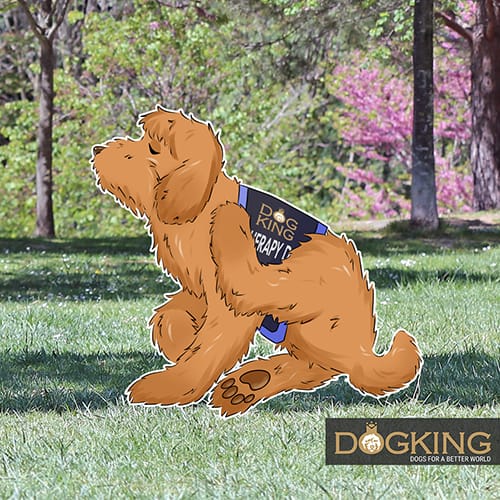
Geste du chien 19: Tourner la tête - Éviter les ennuis
Lorsqu'un chien tourne intentionnellement la tête vers l'arrière, il détourne le regard pour exprimer qu'il ne veut pas d'ennuis. C'est un geste d'apaisement envers un autre chien qui a une attitude dominante ou envers un humain qui l'intimide. Ce geste est généralement accompagné d'autres, comme le léchage de la truffe, les bâillements et les griffures. Il est très fréquent de l'observer lorsqu'un chien fixe un autre chien qui s'approche de lui et qu'il tourne soudainement la tête avant de regarder en arrière.
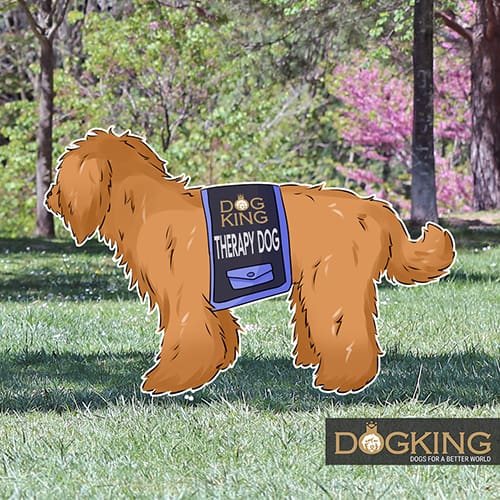
Geste du chien 20: Renifler - Une certaine insécurité
Il s'agit d'un geste que le chien utilise de la même manière que le grattage. La situation le met mal à l'aise et l'insécurise, et en reniflant, il canalise ce stress. Comme les chiens reniflent très souvent, la façon la plus évidente de considérer ce signal comme une forme de langage corporel est lorsqu'il se produit isolément dans une situation où il n'est pas logique que le chien ait besoin de renifler le sol. Par exemple, lorsqu'il remarque qu'un autre chien s'approche de lui et qu'il est très attentif à lui, il baisse soudain la tête pour renifler le sol. Il est inutile de rediriger son attention vers une autre odeur alors qu'il se concentre sur l'autre chien. Il est clair que le chien exprime son malaise à l'égard du chien inconnu.
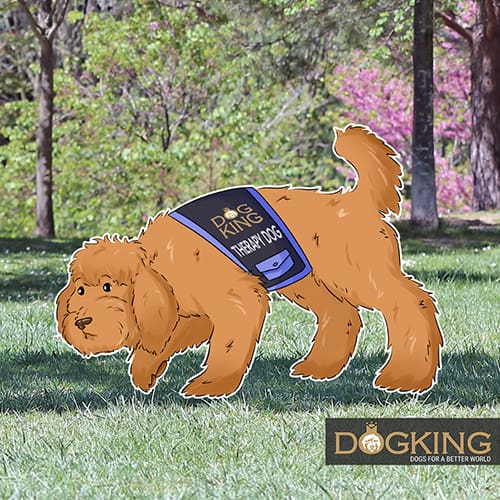
Geste du chien 21: Marquage de l'urine - Libération d'un malaise
C'est un geste que les chiens mâles ont tendance à faire lorsqu'ils rencontrent un autre chien. Comme le reniflage, le marquage à l'urine n'est pas un besoin qui se fait sentir à ce moment-là, mais plutôt une impulsion qui reflète son inconfort face à la situation de rencontrer un chien dont il ne sait pas comment il va réagir. En marquant, d'une part, il évacue son stress et, d'autre part, il fait une déclaration d'intention à l'autre chien.
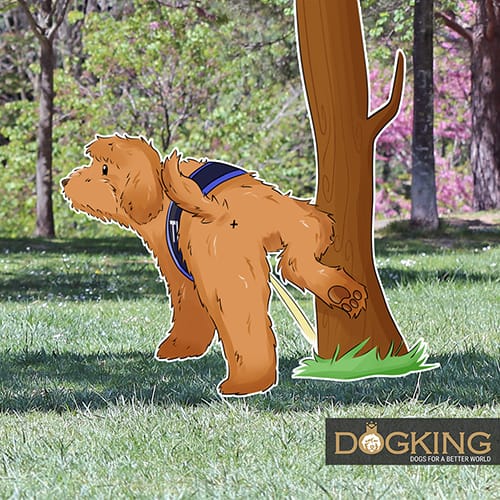
Posture du chien 22: Dos hérissé - Éloigner une menace
Lorsque le chien détecte quelque chose de menaçant, les poils de son dos peuvent instinctivement se hérisser, comme nous le faisons lorsque nous avons la chair de poule. Le chien a la tête tendue vers l'objet menaçant, sa queue est également tendue, ses oreilles sont dressées vers l'avant et les poils de son dos sont dressés pour former une crête (ce qui est plus facile à observer chez les chiens à poil court ou moyen). Il semble que, grâce à cet effet, le chien semble plus grand et a donc plus de chances de dissuader la menace de partir.
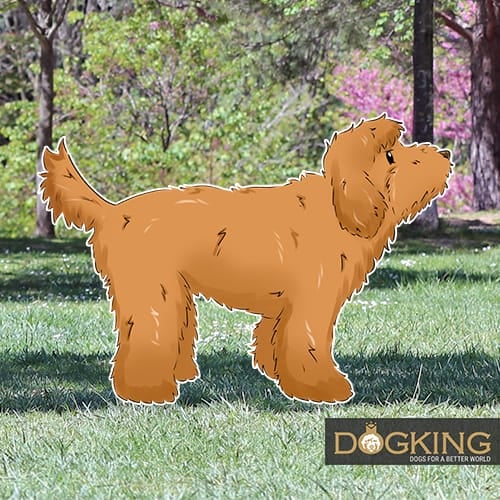
Posture du chien 23: raideur maximale - Tension élevée
Un chien sûr de lui, s'il essaie d'exercer une certaine forme d'autorité ou de dominer un autre chien ou un humain, essaiera de paraître à l'autre chien aussi grand et fort que possible, les oreilles dressées, les poils hérissés, la tête et le cou droits et le corps généralement légèrement arqué et prêt à l'attaque. S'il lève la queue, fronce les sourcils et montre les dents, il n'exprime pas seulement sa dominance sociale, mais il menace également le danger potentiel et peut agir de manière agressive s'il est défié.
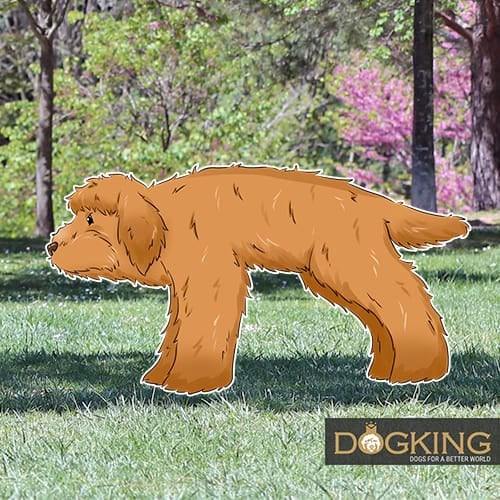
Posture du chien 24: Se recroqueviller - Peur
Un chien qui a peur d'un autre chien ou d'une personne aura un visage de chiot, essayant d'être aussi rond que possible, avec les oreilles en arrière, le front lisse et un contact visuel indirect. Son corps est baissé, la queue entre les pattes, et il peut lever une patte. Il est probable qu'il transpire et laisse des traces de sueur sur le sol. Il peut également uriner. Ces signaux sont destinés à apaiser l'individu qui a un statut social plus élevé que lui ou les chiens qu'il peut percevoir comme une menace potentielle, afin d'éviter tout défi ou conflit ultérieur.
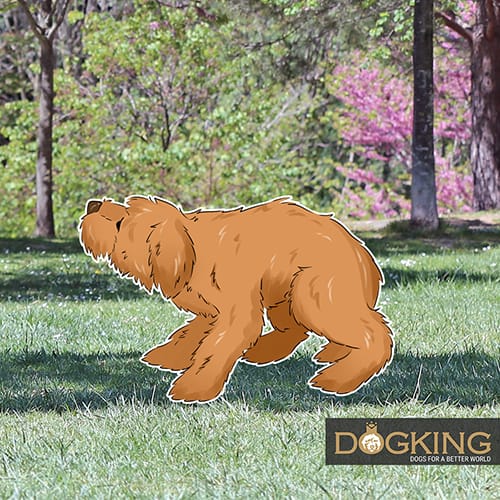
Posture du chien 25: Repli sur soi - Sentiment de menace
Lorsqu'un chien est effrayé mais non soumis et qu'il risque d'attaquer si on le défie, il se montre avec son pelage frisé, le corps baissé, les oreilles en arrière, le nez plissé, les dents visibles, la commissure des lèvres retroussée et la queue rentrée entre les pattes. Un chien émet généralement ces signaux corporels lorsqu'il se trouve face à face avec la personne ou l'animal qui le menace. Si la menace ne cesse pas, il est susceptible d'attaquer.
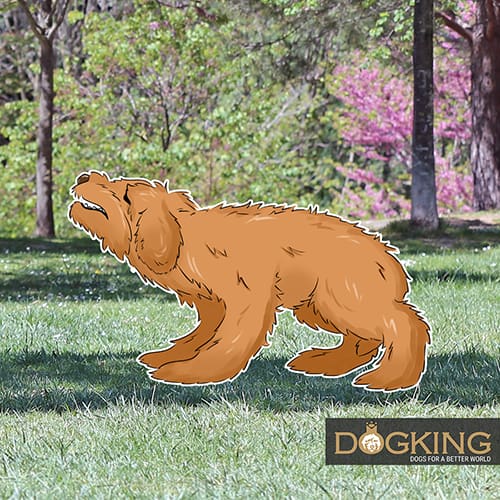
La communication des chiens par la queue
La queue du chien exprime clairement l'humeur et les intentions du chien, bien que le fait de la remuer soit un signal souvent mal interprété. La plupart des gens pensent qu'une queue qui remue signifie uniquement que le chien est heureux, et c'est souvent le cas, mais certains chiens remuent également la queue lorsqu'ils sont nerveux, surexcités ou frustrés.
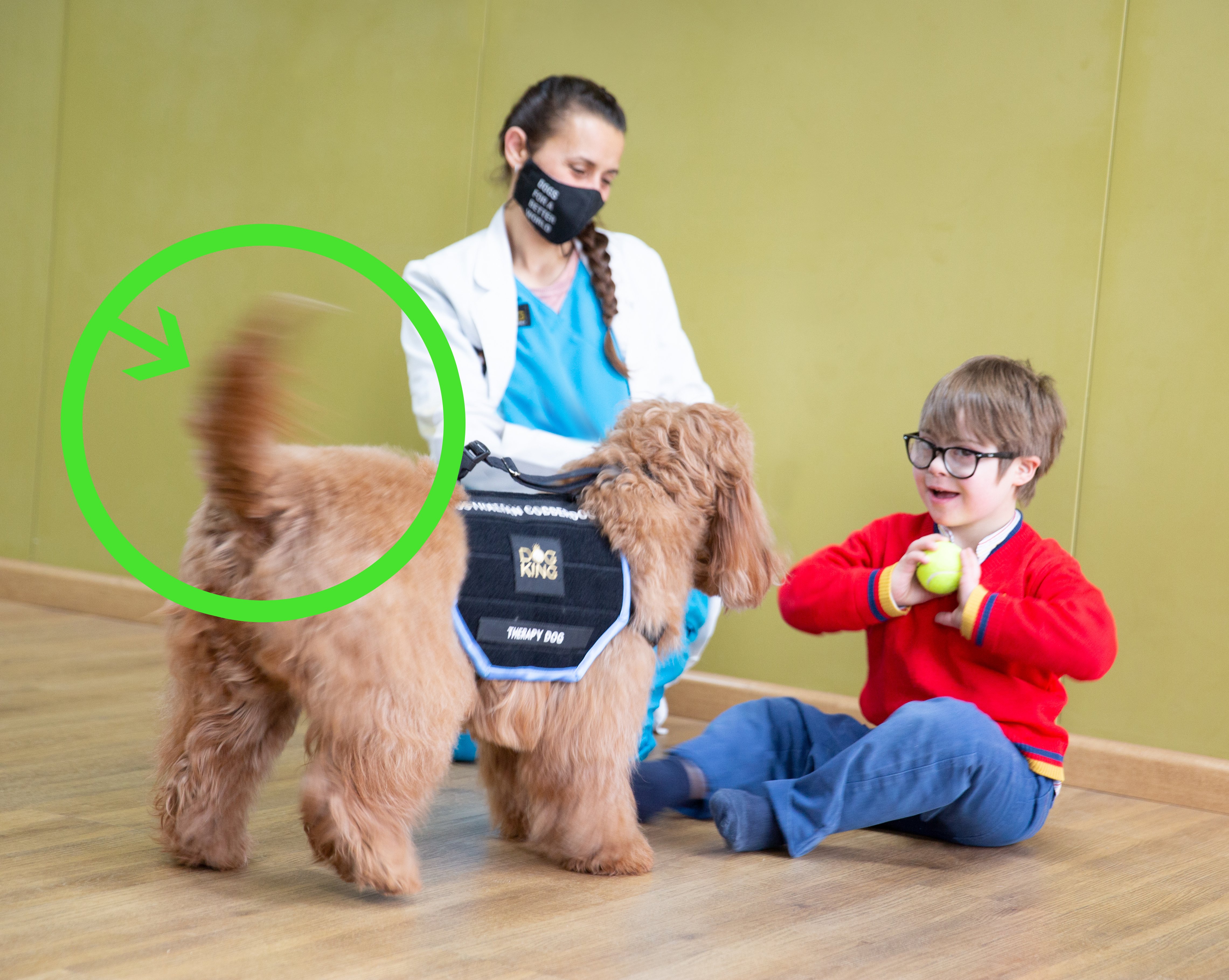
La queue d'un chien peut remuer de 6 façons différentes pour communiquer :
- Queue levée : Un chien confiant ou excité lèvera la queue en l'air, ce qui permettra à l'odeur des glandes anales de circuler plus librement et d'annoncer sa présence..
- Queue tendue : Un chien qui remue la queue, mais qui aboie en adoptant une posture défensive, le visage tendu et les yeux rigides, est trop excité et frustré, ce qui signifie que son espace ne doit pas être envahi.
- Queue basse ou entre les pattes : indique un manque de confiance, de la nervosité ou de la peur.
- Queue haute mais agitée plus lentement : Signifie que le chien évalue la situation.
- Queue étirée et enroulée : Signifie que le chien est tendu et prêt à prendre des mesures offensives ou défensives.
- Queue agitée en cercles : Comme un hélicoptère, accompagnée d'un mouvement fluide et détendu du corps et d'un balancement plus bas, c'est un signe d'amitié et de volonté de participer.
Le langage des chiens à travers les oreilles
Les oreilles constituent un autre élément très important du langage corporel des chiens. Avec la queue, les oreilles expriment l'état dans lequel se trouve le chien et, contrairement à la queue, elles ne bougent généralement pas délibérément pour communiquer avec un autre individu, mais sont le reflet de ce que ressent le chien. Pour faire une comparaison avec l'homme, les oreilles sont au chien ce que les sourcils sont à l'homme.
Certains chiens ont les oreilles dressées, comme les loups, et d'autres ont les oreilles tombantes, comme les Cobberdogs australiens. Dans le premier cas, il est généralement plus facile de visualiser les différentes positions et les mouvements effectués par l'oreille, mais si le chien a les oreilles tombantes, il faut regarder le début de l'oreille, qui sera celui qui marque le mouvement.
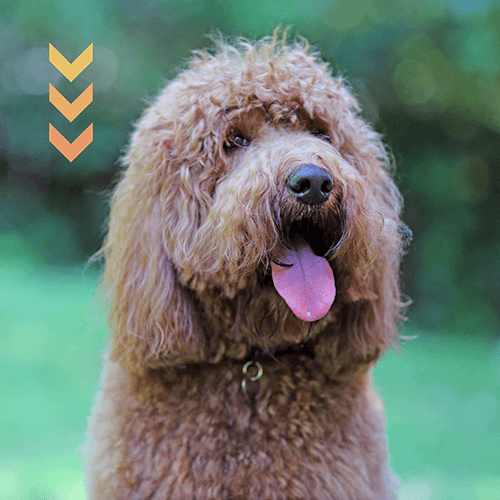
Les oreilles des chiens peuvent avoir 3 positions et chacune d'entre elles a une signification différente :
- Oreilles en avant : Cela signifie que le chien est attentif ou alerte. Il est probablement en train d'analyser la source du son et d'évaluer comment il doit réagir. En fonction de la posture du corps, on peut interpréter que le chien comprend la source sonore comme quelque chose de menaçant, d'amical ou de stimulant.
- Oreilles détendues : Cela signifie que le chien est calme et non perturbé. L'animal est généralement dans cette position lorsqu'il se repose, qu'il s'ennuie ou qu'il se trouve dans une situation qui lui est familière.
- Oreilles inclinées vers l'arrière : Cela signifie que le chien adopte une attitude soumise ou intimidée. Certains chiens ont tendance à adopter cette position lorsqu'ils interagissent avec leur famille, car il s'agit d'une attitude typique des chiots, et même à l'âge adulte, ils ressentent toujours ce sentiment paternel-filial lorsqu'ils interagissent avec leurs humains. Ce mouvement des oreilles n'est pas forcément inoffensif. Si le chien accompagne ses oreilles en arrière d'un grognement, il peut être effrayé mais prêt à se défendre à tout moment.
Amputation de la queue et des oreilles
La queue et les oreilles sont très importantes pour l'équilibre et la signalisation, de sorte que la pratique consistant à les amputer complètement ou partiellement nuit considérablement à la communication du chien. La queue et les oreilles reflètent les émotions du chien à tel point que lorsqu'elles sont amputées, l'animal est presque totalement privé de sa capacité à s'exprimer et à communiquer. La coupe de la queue ne devrait jamais être pratiquée, sauf pour des raisons de santé.